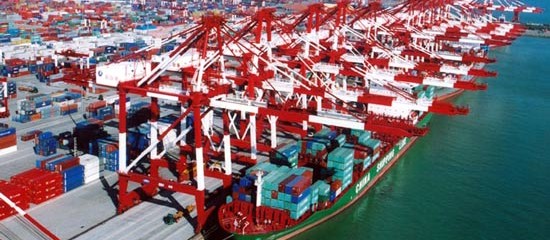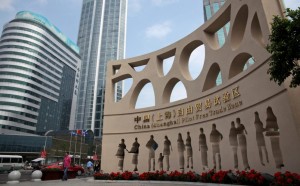10
Feb 2014
Supply Chain Key to Success in China
It’s no secret that China’s domestic consumption is rising rapidly. Chinese consumers are buying more of everything (from apparel and white goods to luxury items and home ware) and as they buy more, from more channels, including online, at single brand stores and from large specialty chains, domestic and foreign owned companies have to re-asses their supply chain infrastructure in China for both selling and making goods.
Supply Chain in China was once an afterthought or was only thought of in terms of the MAKE and SHIP processes include din manufacturing in China. But as China becomes not only the factory of the world but the “mall of the world” this can no longer be true.
The best way to start the re-evaluation process in China is to study the trends and changes in China supply chain and to conduct a comprehensive Supply Chain Assessment (SCA ) that includes all six “MEGA-PROCESSES” of the supply chain: PLAN-MAKE-BUY-STORE-DISTRIBUTE-SELL.
Both the public and private sectors in China are taking some bold steps to respond to the challenges of the new consumption-driven economy. Government measures, though stuck at a policy level in many cases, are addressing the right issues. Domestic companies are rising up to meet new demands. In 2014, China will see dramatic developments in its core logistics, retail, e-commerce and manufacturing industries.
Some key trends and issues companies need to plan for in 2014 include:
Transportation Costs and Parcel Providers
- In September 2013, China became the world’s largest net importer of petroleum. In recent years, China’s fuel costs have grown at around 20%. While it may drop to 15% in the coming year, the government has a challenge to get energy costs under control. In the long run, they plan to allow competition by private firms for domestic oil production, but this will take time as the state-owned oil corporations try to maintain control. Cost of energy for transportation must be a part of every companies SC planning for 2014.
- Additionally, in the past year new markets have opened up for foreign parcel service providers like UPS and FedEx , but because of price pressure from local providers, those additional markets did not generate much growth for them. There is some concern, among foreign companies in general, about the new administration’s support of foreign invested enterprises. So for 2014, it appears that growth will be, at best, slow and steady for foreign logistics providers.
Impact of E-commerce
- The number of ecommerce shoppers in China will rise from approximately 350 million to nearly 600 million by 2016.
- New models for distribution are arising out of the flurry of e-commerce development. As online retailers such as Alibaba, Jindong and Tencent build out their own delivery networks, third party logistics providers (3PLs) are responding by doing the same. These new networks integrate last-mile delivery, fulfillment and warehousing. Shunfeng, Deppon, and Best Logistics are examples of 3PLs aggressively developing such integrated networks that compete with the online retailers.
- China’s warehouse sector has traditionally been hyper-local and extremely fragmented with thousands of providers. Also, warehouses in China have always been low-tech affairs with little automation, little climate control and little attention paid to e-fulfillment specific operations. That is changing. E-commerce is the #1 driver of new and technologically advanced warehouse spaces being built.
- Another trend is that the big e-commerce players are setting up their own warehouse and logistics networks. For example, Tencent announced in January an investment of $ 193 million for a 10 percent stake in China South City Holdings, a company that operates warehouses and factory outlet malls and provides several other logistics services to retailers.
Distribution
- For everyone developing distribution networks, land availability will continue to be a problem. The national government recognizes the importance of encouraging logistics infrastructure growth, but is limited in the support it can garner at local levels where land is allocated. With extremely low vacancy rates – as low as 3% in some markets like Beijing – warehouse rents will continue their growth of 5%-10% per year.
- One thing that will not change much in 2014 is the need to engage with 3rd party distributors to move products to and sell in department stores, big box retailers, grocery stores and specialty shops.
- For brands, new forms of franchise, licensing and joint venture models will require hyper-specialized supply chain infrastructure to protect brand equity, ensure product availability and maximize sell-through.
The new Shanghai Free Trade Zone, which was launched September 29, 2013, will present new opportunities for both inbound and outbound trade, such as:
- International cargo may be transferred in Shanghai, rather than having to go to Incheon or other ports for transfer.
- Foreign vessels will be able to ship domestically from Shanghai to other China ports.
- The administration process for customs is being greatly simplified by allowing batch clearing of waybills, for example.
- Distribution centers in the new zone will be allowed to fill both domestic and international orders. This privilege is currently reserved for domestic companies, but could open up to foreign companies in the future.
Sourcing
As costs increase, some sourcing will move to lower cost countries and non-coastal regions in China, but not in significant volume. China manufacturers are now looking to offer more than low-cost production as they seek to move up the value chain. They will do so by offering design, make-on-demand, and venturing into higher technology components in the developed Pearl River Delta, Jiangsu and Fujian Provinces while shifting lower end manufacturing to the interior.
Outlook
China is struggling, but making progress, to morph into an economy that is driven by domestic consumption, but the logistics infrastructure to enable this transformation is a major challenge. The government recognizes the issues and will continue taking measures such as controlling fuel cost, encouraging logistics development, and opening up trade. Domestic companies will continue to take aggressive steps such as building their own integrated logistics networks and moving up the value chain.
Global companies making and selling products in China must reassess their approach to supply chain in China and understand that supply chain excellence saves on cost, creates new revenue and has a direct effect on brand equity.
Source from:Forbes
For more information check SBE International
































